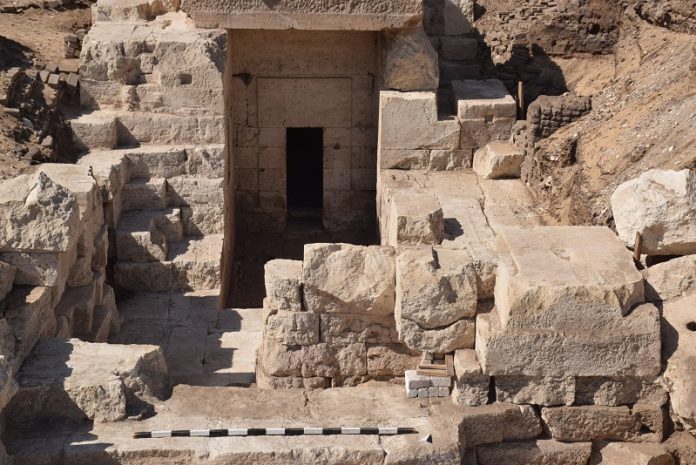
Archaeologists in Egypt have uncovered what might be the remains of a temple from the Ptolemaic period (2nd century BCE) in the cliffs of Athribis, near Sohag, about 200 kilometers north of Luxor.
The team, led by Professor Christian Leitz and Marcus Müller from the University of Tübingen, discovered the entrance to what they believe could be a temple hidden behind piles of rubble.
This entrance, called a pylon, features two large towers flanking a central gateway.
The pylon was part of a grand temple complex that originally stood 51 meters wide, with towers reaching 18 meters high. Unfortunately, most of the structure was dismantled centuries ago, likely for its stone, leaving only about 5 meters of the towers intact.
Excavations have been ongoing in Athribis since 2012, with researchers working to uncover an ancient temple district built between 144 BCE and 138 CE.
Recent efforts focused on the northern tower and entrance gate revealed fascinating carvings showing a king offering sacrifices to the lion-headed goddess Repit and her son, Kolanthes.
Newly discovered hieroglyphic inscriptions identify the king as Ptolemy VIII, who likely ordered the construction of the pylon.
Inside the northern tower, researchers found a hidden chamber after removing a 20-ton ceiling block using air cushions, scaffolding, and rollers.
The chamber, measuring about 6 meters long and 3 meters wide, served as a storage room for temple items and amphorae. A corridor leading through the pylon allowed access to this room from outside.
The entrance is decorated with carvings of the goddess Repit, while the door frame features the fertility god Min, alongside rare depictions of star deities with falcon and ibis heads.
A surprising discovery on the pylon façade was a second door leading to a staircase. This staircase ascended at least four levels to an upper floor, now destroyed, that likely housed additional storage rooms.
The next phase of excavation, starting in November 2024, will focus on searching for the presumed temple behind the pylon.
Finely smoothed limestone blocks and cobra carvings on the rock face suggest that a hidden sanctuary might lie beyond. If confirmed, this discovery could shed new light on temple architecture and religious practices during the Ptolemaic period.
Source: KSR.



